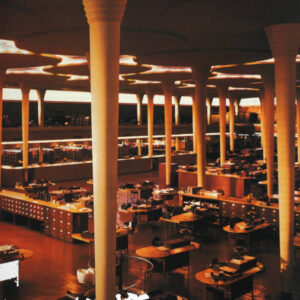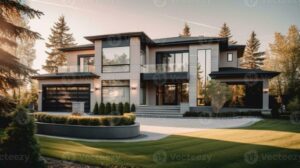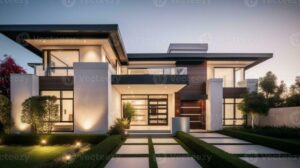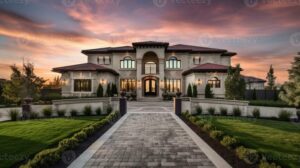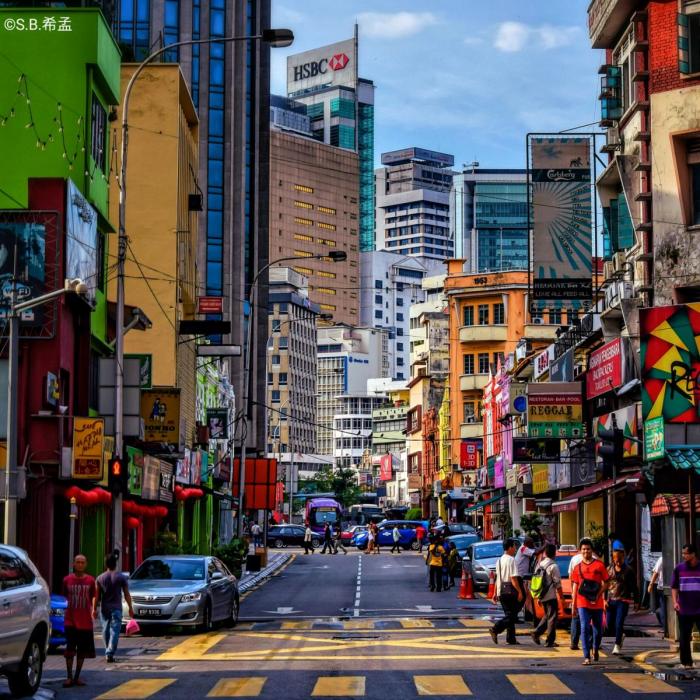
Urban infill projects are gaining momentum as cities strive to maximize their existing spaces, transforming underutilized areas into vibrant communities. This concept not only addresses housing shortages but also promotes sustainable growth by utilizing available land more efficiently. With growing urban populations, the significance of such projects cannot be overstated, as they offer innovative solutions to modern urban challenges.
Exploring the benefits and challenges of urban infill projects reveals a complex landscape where opportunities for investment and community revitalization intersect. Successful examples from various cities showcase how these initiatives breathe new life into neighborhoods, making them more livable and economically viable while addressing the pressing need for housing and commercial spaces.
Urban Infill Projects Overview
Urban infill projects are a crucial aspect of modern city development, focusing on utilizing underdeveloped or vacant land within existing urban areas. These initiatives play a significant role in promoting sustainable growth by maximizing land use, reducing urban sprawl, and enhancing community cohesion. The importance of urban infill lies in its ability to address housing shortages while revitalizing neighborhoods and improving infrastructure.The benefits of urban infill initiatives include increased density, which supports local businesses and public transportation, and the rejuvenation of neglected areas, leading to enhanced property values and community pride.
However, challenges such as zoning regulations, community resistance, and potential environmental impacts can complicate these projects. Successful examples of urban infill projects can be seen in various cities around the world. For instance, the High Line in New York City transformed an old elevated railway into a vibrant park, significantly boosting local real estate values. In Portland, Oregon, the redevelopment of the Pearl District turned a former industrial area into a thriving community filled with housing, retail, and public spaces.
Real Estate Investment in Urban Infill
Investing in urban infill projects presents a unique opportunity for real estate investors. Strategies for success in this area often include identifying properties in high-demand neighborhoods, collaborating with local authorities to navigate regulatory challenges, and leveraging community support to enhance project viability. Investors should also consider mixed-use developments that incorporate residential, commercial, and recreational spaces, thereby attracting diverse tenant bases.When focusing on urban infill, potential risks include market fluctuations and the challenges of managing construction in densely populated areas.
However, the rewards can be substantial, with urban infill properties often appreciating in value more quickly than those in peripheral locations. Urban infill also aligns with current trends towards sustainable living, making these investments appealing to socially conscious buyers.The impact of urban infill on overall real estate investment trends is notable. As cities become more crowded, the demand for urban housing rises, prompting investors to explore infill opportunities.
This trend reflects a shift towards urban living, particularly among younger generations who prioritize accessibility to amenities and public transportation.
Real Estate Market Trends Impacting Urban Infill
Current real estate market trends significantly influence urban infill developments. One major trend is the growing preference for walkable communities, which encourages the creation of infill projects that prioritize pedestrian access and reduce reliance on cars. Additionally, the rise of remote work has shifted demographic patterns, with more people seeking housing closer to urban centers, thus increasing the demand for infill developments.Demographic shifts, such as an aging population and the movement of millennials into urban areas, are also reshaping urban infill strategies.
Developers are now focusing on creating diverse living spaces that cater to various age groups and lifestyles, often incorporating amenities like parks, cafes, and cultural venues.Comparing urban infill project trends across different geographical locations reveals unique patterns. For instance, cities like San Francisco and New York showcase high-density projects that maximize vertical space, while smaller cities may focus on horizontal expansions that blend with existing neighborhoods.
Smart Homes and Urban Infill
The integration of smart home technology in urban infill projects is becoming increasingly popular. These technologies enhance energy efficiency, improve security, and offer residents greater convenience through automation. Incorporating smart home features not only attracts tech-savvy buyers but also aligns with sustainability goals by reducing energy consumption.Benefits of including smart home technologies in urban developments extend beyond individual units. Communities that implement smart city solutions, such as connected infrastructure and shared resources, create a more efficient urban environment.
This approach fosters connectivity among residents and enhances their quality of life.Examples of urban infill projects utilizing smart home technology include the Dockside Green development in Victoria, Canada, which integrates eco-friendly features with smart technologies. Similarly, the smart city initiative in Songdo, South Korea, exemplifies how urban infill can leverage technology to create a fully integrated urban living experience.
Commercial Real Estate and Urban Infill
Commercial real estate plays a vital role in urban infill projects, providing necessary services and employment opportunities within communities. By integrating commercial spaces into infill developments, cities can revitalize areas that may have previously suffered from economic decline, attracting both residents and businesses back to the area.Urban infill can effectively revitalize commercial real estate spaces by transforming outdated or vacant properties into vibrant centers for commerce.
For example, the adaptive reuse of old warehouses into mixed-use developments can create popular retail and dining destinations, thereby driving foot traffic and enhancing local economies.Case studies of successful commercial developments in urban infill areas include the transformation of the historic Gaslamp Quarter in San Diego, where mixed-use buildings combine residential, retail, and entertainment spaces, fostering a lively urban atmosphere.
Similarly, the revitalization of the West Loop in Chicago has turned former industrial areas into a dynamic hub of restaurants, offices, and cultural attractions.
Luxury Homes in Urban Infill
There is a growing demand for luxury homes within urban infill projects, as affluent buyers seek properties in prime locations close to urban amenities. These luxury developments often feature high-end finishes, unique architectural designs, and exclusive services aimed at attracting discerning clients.Design considerations for luxury homes in infill developments include maximizing space while ensuring privacy and security. Developers often focus on creating outdoor living areas, green spaces, and community features that enhance the overall living experience, making these properties more appealing to potential buyers.Comparing luxury urban infill projects across various cities highlights distinct trends.
For instance, in cities like Miami, luxury infill projects often emphasize waterfront views and outdoor spaces, while in New York, high-rise condominiums with skyline views are in demand. These differences reflect local market trends and buyer preferences, showcasing the diverse nature of luxury urban living.
Luxury Real Estate Market Trends

Trends in the luxury real estate market are increasingly affecting urban infill projects. Demand for eco-friendly luxury homes has surged, leading developers to incorporate sustainable materials and energy-efficient technologies into their designs. This shift aligns with consumers’ growing environmental consciousness and is a critical factor in attracting high-end buyers.The impact of urban infill on the luxury real estate market is significant, as more affluent individuals seek properties in urban areas that offer convenience, cultural amenities, and a vibrant lifestyle.
Urban infill developments often provide the ideal solution by combining luxury living with accessibility to city attractions.Insights into buyer preferences for luxury urban infill properties reveal a strong desire for community-oriented living. Buyers are increasingly looking for properties that not only offer luxurious amenities but also foster connection and engagement within their neighborhoods. This trend is reshaping how developers approach urban infill projects, focusing on creating inclusive environments that cater to modern lifestyles.
Final Review
In summary, urban infill projects stand as a testament to the potential of thoughtful urban design in revitalizing communities and enhancing the quality of urban life. As cities continue to evolve, embracing the principles of urban infill could lead to more sustainable and resilient urban environments. The future of city living is being shaped by these projects, paving the way for innovative solutions that cater to the diverse needs of urban residents.
FAQ Corner
What are urban infill projects?
Urban infill projects are developments that utilize vacant or underused land within urban areas, aiming to enhance the functionality and livability of cities.
What are the benefits of urban infill projects?
They promote sustainable development, reduce urban sprawl, and often revitalize neighborhoods, improving local economies and community cohesion.
Are there risks associated with investing in urban infill?
Yes, potential risks include market fluctuations, zoning issues, and community opposition, which can impact project success.
How do urban infill projects affect property values?
Typically, they can increase property values by improving neighborhood desirability and providing more housing options.
What role does technology play in urban infill?
Technology, especially smart home innovations, enhances the efficiency and appeal of urban infill projects, attracting modern buyers and renters.
